
Info
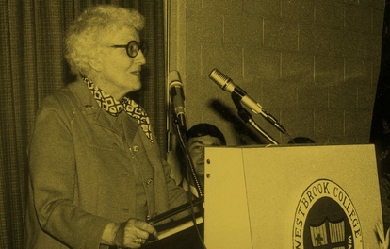
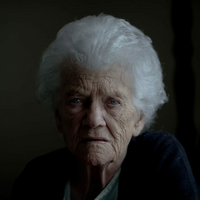
May Sarton is the pen name of Eleanore Marie Sarton ( (May 3, 1912– July 16, 1995), an American poet, novelist and memoirist. Biography Sarton was born in Wondelgem, Belgium (today a part of the city of Ghent). Her parents were science historian George Sarton and his wife, the English artist Mabel Eleanor Elwes. When German troops invaded Belgium after the assassination of Archduke Franz Ferdinand in 1914, her family fled to Ipswich, England, where Sarton’s maternal grandmother lived. One year later, they moved to Boston, Massachusetts, where her father started working at Harvard University. She went to school in Cambridge, Massachusetts, graduating from Cambridge High and Latin School in 1929. She started theatre lessons in her late teens, but continued writing poetry. She published her first collection in 1937, entitled Encounter in April. In 1945 in Santa Fe, New Mexico, she met Judy Matlack, who became her partner for the next thirteen years. They separated in 1956, when Sarton’s father died and Sarton moved to Nelson, New Hampshire. Honey in the Hive (1988) is about their relationship. In her memoir At Seventy, Sarton reflected on Judy’s importance in her life and how her Unitarian Universalist upbringing shaped her. She was elected a Fellow of the American Academy of Arts and Sciences in 1958. Sarton later moved to York, Maine. In 1990, she suffered a stroke, severely reducing her ability to concentrate and write. After several months, she was able to dictate her final journals, starting with Endgame, with the help of a tape recorder. She died of breast cancer on July 16, 1995, and is buried in Nelson, New Hampshire. Works and themes Despite the quality of some of her many novels and poems, May Sarton’s best and most enduring work probably lies in her journals and memoirs, particularly Plant Dreaming Deep (about her early years at Nelson, ca. 1958-68), Journal of a Solitude (1972-1973, often considered her best), The House by the Sea (1974-1976), Recovering (1978-1979) and At Seventy (1982-1983). In these fragile, rambling and honest accounts of her solitary life, she deals with such issues as aging, isolation, solitude, friendship, love and relationships, lesbianism, self-doubt, success and failure, envy, gratitude for life’s simple pleasures, love of nature (particularly of flowers), the changing seasons, spirituality and, importantly, the constant struggles of a creative life. Sarton’s later journals are not of the same quality, as she endeavoured to keep writing through ill health and by dictation. Although many of her earlier works, such as Encounter in April, contain vivid erotic female imagery, May Sarton often emphasized in her journals that she didn’t see herself as a “lesbian” writer, instead wanting to touch on what is universally human about love in all its manifestations. When publishing her novel Mrs. Stevens Hears the Mermaids Singing in 1965, she feared that writing openly about lesbianism would lead to a diminution of the previously established value of her work. “The fear of homosexuality is so great that it took courage to write Mrs. Stevens Hears the Mermaids Singing,” she wrote in Journal of a Solitude, “to write a novel about a woman homosexual who is not a sex maniac, a drunkard, a drug-taker, or in any way repulsive, to portray a homosexual who is neither pitiable nor disgusting, without sentimentality ...” After the book’s release, many of Sarton’s works began to be studied in university level women’s studies classes, being embraced by feminists and lesbians alike. However, Sarton’s work should not be classified as 'lesbian literature’ alone, as her works tackle many deeply human issues of love, loneliness, aging, nature, self-doubt etc., common to both men and women. Margot Peters’ controversial biography (1998) revealed May Sarton as a complex individual who often struggled in her relationships.

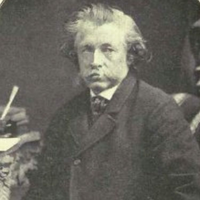
Charles Sangster (July 16, 1822– December 9, 1893) was a Canadian poet whose 1856 volume, The St. Lawrence and the Saguenay, “was received with unanimous acclaim as the best and most important book of poetry produced in Canada until that time.” He was “the first poet who made appreciative use of Canadian subjects in his poetical work.” The Dictionary of Canadian Biography calls him “the best of the pre-confederation poets.” Life Sangster was born at the Navy Yard on Point Frederick (now the site of Royal Military College of Canada), near Kingston, Ontario, the son of Ann Ross and James Sangster. A twin sister died in infancy. His father, a “joiner” or shipbuilder who worked for the British Navy around the Great Lakes, died at Penetanguishene just before Charles turned 2. His mother raised Charles and his 4 siblings on her own. Sangster was an indifferent student, finding “the school curriculum irrelevant and his masters stern and uninspiring.” At 15 years old, he left school to help provide for the family. He took a job in the naval lab making cartridges at Fort Henry and two years later was transferred to the Ordnance office at the fort. About this time (1839) Sangster wrote his first serious poem, a 700-line narrative in rhyming couplets called “The Rebel.” The poem “contains an extensive vocabulary and rich and imaginative historical and geographical allusions,... beyond what might be expected of a boy... who had so little formal education.... the content and form suggest considerable previous writing.” During the 12 years he worked at the Ordinance office Sangster began doing part-time work for a Kingston newspaper, the British Whig. He also continued writing poetry and submitting it, anonymously or pseudonymously, to the local papers. Writing career and success In 1849 Sangster quit his job at Fort Henry and moved to Amherstburg, Ontario, where he became editor of the Amherstburg Courier. When James Reeves, owner of the Courier, died the same year, Sangster returned to Kingston, to work as a proofreader and bookkeeper for the British Whig. Sangster first gained national attention as a poet in 1850, when his poetry began appearing in Canada’s Literary Garland magazine. Soon his work appeared in other magazines, such as Anglo-American Magazine. In 1853 Sangster took a steamship excursion down the St. Lawrence River and up the Saguenay River in Quebec, which he wrote about for the Whig in a series of travel letters called “Etchings by the Way”—material he would also use in his long poem, “The St. Lawrence and the Saguenay”. Sangster published his first book of poetry, The St Lawrence and the Saguenay, and Other Poems, in 1856. The book was widely praised by reviewers and readers. Susanna Moodie wrote to Sangster; "If a native of Canada, [one] may well be proud of her Bard, who has sung in such lofty strains the natural beauties of his native land." The National Magazine of London echoed the same sentiment: “Well may the Canadians be proud of such contributions to their infant literature.... In some sort, and according to his degree, Mr. Sangster may be regarded as the Wordsworth of Canada.” Charles Sangster "married 21-year-old Mary Kilborn of Kingston on Sept. 16, 1856, and the newlyweds moved into a brick house at 144 Barrie Street across from the grassy park. (An historical plaque directly across the street honours the Sangster home.)" Mary was to die of pneumonia just 16 months later. In 1859, Sangster wrote the poem “Brock”, commissioned for the inauguration of the monument to General Isaac Brock at Queenston Heights. Sangster’s second book of poetry, Hesperus and Other Poems and Lyrics, appeared in 1860, published in Kingston and Montreal. “A rousing success, Hesperus... received even more approval than his first book.” “Hesperus was well received, and many critics considered it superior to The St. Lawrence and the Saguenay, as did Sangster himself.” The same year, Sangster remarried, to Henrietta Charlotte Mary Meagher, who was only 17 years of age (to his 38). In 1864, Sangster became a reporter for the Kingston Daily News, and 16 of his poems appeared in the first-ever anthology of Canadian poetry, Selections from Canadian Poets. The same year, the Sangsters celebrated the birth of their first child, Charlotte Mary. Post office and retirement By 1867, Sangster “was in a poor financial situation and suffered increasingly from ill health, depression, and a nervous disorder that would cause him deep mental pain the rest of his life.” To help him out his neighbor, the new Postmaster-General Alexander Campbell arranged a job for Sangster with Canada’s new Post Office Department. Accordingly, in 1868, at 46, Sangster “accepted a position in the Post-Office Department at Ottawa, where his poetic energy and ambition succumbed, apparently, to the incessant drudgery and to the hampering cares of ill-paid employment.”, “With his appointment... Sangster’s life became characterized by overwork, ill health and scant literary output.” He remained with the Post Office until his retirement in 1886. Sangster was also kept busy by a growing family. Sadly, Charlotte died in 1868, shortly after the move to Ottawa. The same year, though, Mrs. Sangster gave birth to a second daughter, Florence. Two years later, in 1870, their third daughter, Gertrude was born, followed in 1879 by a son, Roderick. Sangster published 16 poems in magazines between 1868 and 1878, most of which he had written before moving to Ottawa. He wrote virtually nothing for the 18 years he worked at the Post Office. As he later wrote: "When I went down to Ottawa... I took a pile of M.S. of a third volume with me, as I thought 'ready for the press’, but in all the 18 years I remained there I did little more than correct.... When they get a man into the Civil Service, their first duty is to crush him flat, and if he is a fool of a Poet, or dares to think of any nonsense of that kind, draw him through a Knot or a gimlet hole a few times, pile with agony of toil, toil, toil until his nerves are flattened out, all the rebound knocked out of him, and then– superannuate him... and tell him he should be thankful.” Sangster had a nervous breakdown in 1875, and developed a chronic nervous system condition during the 1880s. To make matters worse, Henrietta died sometime between 1883 and 1886, leaving him to raise his new family alone. After another breakdown in March 1886, he took a six-month leave of absence, and also resigned from the Royal Society of Canada (which had elected him in 1882). Finally, that September he retired and moved back to Kingston. For the first years of retirement, Sangster did little but convalesce. In July 1888, he received a letter from W.D. Lighthall, inquiring about new poems for an upcoming anthology (most likely Lighthall’s 1889 Songs of the Great Dominion. Sangster replied the next day, and the two men struck up a friendship by mail. Revitalized, Sangster began revising his poetry. He doubled the size of “The Saint Lawrence and the Saguenay” to over 200 stanzas, and sent the manuscript to his cousin Amos Sangster to illustrate. When Amos died, the manuscript and the new poem was lost. However, 40 of the new stanzas survived thanks to being published in various magazines. Charles Sangster also cut many of the “other” poems in the first volume, and made over 2,000 changes to the ones he kept. Hesperus got off easier, but Sangster still made more than 200 revisions to the work. As well, Sangster prepared two more volumes for publication, mostly from poems he’d written before moving to Ottawa: Norland Echoes & Other Strains, and The Angel Guest & Other Poems. By the summer of 1871, all four manuscripts were complete, and Sangster sent them off to Lighthall (who had become his literary executor). However, before any of them could be published, Sangster died. None of them were published until the 1970s. Charles Sangster died in Kingston in 1893, and is buried in the city’s Cataraqui Cemetery. Writing The Canadian Encyclopedia says that “Sangster’s poetry distinguishes him as a lover and keen observer of the natural world. He displays overwhelming passion in some poems and equally extreme melancholy in others. Whatever his mood he is consistently and intensely serious and deeply religious.” Sangster’s inspiration was drawn from three themes he was passionate about: love, nature and religion. He wrote many poems about his experiences and was commended for his ability to express the beauty of Canada’s landscapes. Sangster was often called the “father of Canadian poetry” because of this. Many of the love poems from his first book were directed towards his first wife; the nature poems were of his travels. For a man with limited educational training, Charles Sangster had a vast vocabulary and an extraordinary knowledge of history, classics, mythology and authors. His poems include an extensive knowledge of classic, historic, and mythological works, as well as British and American authors, including Shakespeare, Milton, Burns, Wordsworth, P.J. Bailey, and Longfellow. Recognition Sangster was elected a Fellow of the Royal Society of Canada in 1892. Publications * The St. Lawrence and the Saguenay, and Other Poems. Kingston, ON: J. Creighton & J. Duff, 1856. New York: Miller, Orton & Mulligan, 1856. * Hesperus, and Other Poems and Lyrics. Kingston: J. Creighton, 1860. Montreal: J. Lovell, 1860. London, UK: Trubner, 1860. * Our Norland. Toronto: Copp Clark, [1890]. * The St Lawrence and the Saguenay and other poems; Hesperus and other poems and lyrics, intro. Gordon Johnston (Toronto: University of Toronto Press and Buffalo, N.Y., 1972. ISBN 0-8020-1935-8 * Norland echoes and other strains and lyrics,. Frank M. Tierney ed. Ottawa: Tecumseh, 1976. ISBN 0-919662-59-5 * The angel guest and other poems and lyrics. Frank M. Tierney ed. Ottawa: Tecumseh, 1977. ISBN 0-919662-63-3 * Hesperus and other poems and lyrics(rev. ed.). Frank M. Tierney ed. Ottawa: Tecumseh, 1979. ISBN 0-919662-72-2 * St. Lawrence and the Saguenay and other poems (rev. ed.). Frank M. Tierney ed. Ottawa: Tecumseh, 1984. ISBN 0-919662-95-1, ISBN 0-919662-96-X * Except where noted, bibliographic information courtesy Dictionary of Canadian Biography. References Wikipedia—https://en.wikipedia.org/wiki/Charles_Sangster

I am an electrical engineer by profession and I have recently taken up this interest of writing poems, but my English vocabulary is preventing me from moving further ahead. All the same I am putting in my best and I shall not give up easy. I would appreciate all viewers of my poems to jot down any comments (compliments or critics). It would boost up my English as well as my enthusiasm to write more and better poems.
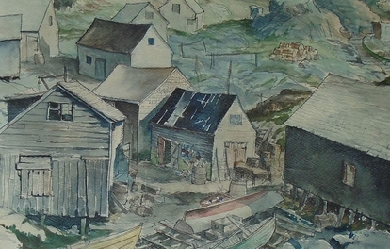
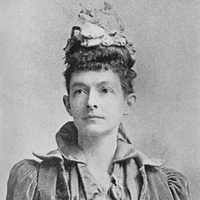
Susan Frances Harrison née Riley (February 24, 1859– May 5, 1935) (a.k.a. Seranus) was a Canadian poet, novelist, music critic and music composer who lived and worked in Ottawa and Toronto. Life Susie Frances Riley was born in Toronto of Irish-Canadian ancestry, the daughter of John Byron Riley. She studied music with Frederic Boscovitz, at a private school for girls in Toronto, and later in Montreal. She reportedly began publishing poetry, in the Canadian Illustrated News, at 16 under the pseudonym “Medusa.” After completing her education, she worked as a pianist and singer. In 1880 she married organist John W. F. Harrison, of Bristol, England, who was the organist of St. George’s Church in Montreal. The couple had a son and a daughter. The Harrisons lived in Ottawa in 1883, when Susie Harrison composed the song “Address of Welcome to Lord Lansdowne” to celebrate the first public appearance of the new Governor General, the Marquess of Lansdowne. In 1887 the Harrisons moved to Toronto, where John Harrison became organist and choirmaster of St. Simon the Apostle, and Susan Harrison began a literary career under the pseudonym “Seranus” (a misreading of her signature, “S. Frances”), soon publishing articles in “many of the leading journals and periodicals.” She wrote a number of songs published in the United States and England under the name Seranus, and published other songs in England under the name, Gilbert King. She was the music critic of The Week from December 1886 to June 1887 under her pen-name of Seranus. She wrote the “Historical sketch on Canadian music” for the 1898 Canada: An Encyclopedia of the Country. Susan Harrison was considered an authority on folk music, and often lectured on the subject. She used traditional Irish melodies in her String Quartet on Ancient Irish Airs, and French-Canadian music in her 1887 Trois Esquisses canadiennes (Three Canadian Sketches), ‘Dialogue,’ ‘Nocturne,’ and 'Chant du voyageur’. She also incorporated French-Canadian melodies in her three-act opera, Pipandor (with libretto by F.A. Dixon of Ottawa). Her String Quartet on Ancient Irish Airs, is likely the first string quartet composed in Canada by a woman. In 1896 and 1897 she presented a series of well-received lectures in Toronto on "The Music of French Canada. For 20 years Harrison was the principal of the Rosedale branch of the Toronto Conservatory of Music. During the 1900s she contributed to and edited the Conservatory’s publication Conservatory Monthly, and contributed to its successor Conservatory Quarterly Review. She wrote the article on “Canada” for the 1909 Imperial History and Encyclopedia of Music. In addition, she wrote at least six books of poetry, and three novels. Writing Poetry Harrison’s musical training is reflected in her poetry: “she was adept in her handling of the rhythmic complexities of poetic forms such as the sonnet and the villanelle. Like other Canadian poets of the late nineteenth century, her prevailing themes include nature, love, and patriotism. Her landscape poetry, richly influenced by the works of Charles G.D. Roberts and Archibald Lampman, paints the Canadian wilderness as beguilingly beautiful yet at the same time mysterious and distant.” Harrison was a master of the villanelle. The villanelle was a French verse form that had been introduced to English readers by Edmund Gosse in his 1877 essay, “A Plea for Certain Exotic Forms of Verse”. Novels Her two novels “articulate a fascination with a heavily mythologized Quebec culture that Harrison shared with many English-speaking Canadians of her time... characterized by a gothic emphasis on horror, madness, aristocratic seigneurial manor houses, and a decadent Catholicism.” “Harrison writes elegiacally of a regime whose romantic qualities are largely the creation of an Upper Canadian quest for a distinctive historical identity.” Recognition Harrison experienced a decline in reputation in her lifetime. In 1916 anthologist John Garvin called her “one of our greater poets whose work has not yet had the recognition in Canada it merits.”. "By 1926, Garvin describes her merely as 'one of our distinctive poets’.” The Dictionary of Literary Biography wrote of Susan Frances Harrison, in 1990, that “Harrison’s unpublished work has not been preserved, her published work is out of print and difficult to obtain, and her once-substantial position in the literary life of her country is now all but forgotten.” Publications Selected songs * Song of Welcome. * Pipandor. opera * ‘Trois Esquisses canadiennes: ’Dialogue,' ‘Nocturne,’ 'Chant du voyageur’. 1887. * Quartet on Ancient Irish Airs. Poetry * Four Ballads and a Play. Toronto: Author, 1890. * Pine, Rose and Fleur De Lis. Toronto: Hart, 1891. * In Northern Skies and Other Poems. Toronto: Author, 1912. * Songs of Love and Labor. Toronto: Author, 1925. * Later Poems and New Villanelles. Toronto: Ryerson, 1928. * Penelope and Other Poems. Toronto: Author, 1934. * Bibliographical information on poems from Wanda Campbell, Hidden Rooms. Prose * Crowded Out and Other Sketches. Ottawa: Evening Journal, 1886. * The Forest of Bourg-Marie, novel. Toronto: G.N. Morang, 1898. * Ringfield, novel. London: Hodder & Stoughton, 1914. Edited * Canadian Birthday Book. Toronto: Robinson, 1887. Poetry anthology. Articles * “Historical sketch of music in Canada,” Canada: An Encyclopedia of the Country, vol 4, J.C. Hopkins ed., Toronto, 1898. * “Canada,” The Imperial History and Encyclopedia of Music, vol 3: History of Foreign Music, W.L. Hubbard ed., New York ca 1909. Discography * Harrison’s piano music has been recorded and issued on media, including: * Keillor, Elaine. By a Canadian Lady Piano Music 1841-1997 Carleton Sound * Keillor, Elaine. Piano Music by Torontonians (1984) References Wikipedia—https://en.wikipedia.org/wiki/Susie_Frances_Harrison

I'm Jesus Mendiola but most call me Draven, I did four years in the marines after i graduated high school in 2006, I was honorably discharged in August 2010. I love being a grease monkey working on all kinds of vehicles as I did Diesel tech work in the marines as my job. My other hobbies are wood working, landscaping, and all out door activities. I listen to all types of music and enjoy reading when I can have the time to read. I'm the only boy out of three girls and I'm the oldest sibling, I love my family with all my heart and would protect them with my life. If you like to know any thing else feel free to ask questions.

hello my name is tamika starks aka 4-play. I'm a 32 year old poet from buffalo New York , I've been writing since my mother died when I was 11. I've been doing the spoken word scene for the 7 years. I love poetry and it's pretty much the one thing I have control of all the time!!
My name is Brian Stockton Jr, better known as BJ. I'm 19 years old. I go to Western Carolina University. I'm a football player and I major in elementary education. I have been through a whole lot more than the average 19 year old. I am motivated by being constantly called not good enough. I am a lover not a fighter. I write poems to vent and to release stress that I constantly hold in. Just like everyone else, I just wanna be happy and successful. I am going to be successful!

Poetry allows me to say all of the things that are in my heart and mind that I cannot express verbally. I feel most at home when I am in my notebook just writing what I feel. It is the most free I will ever be. We live in a world of constant rejection and criticism, so it's nice to be able to contribute something beautiful to world that is in desperate need of it.
Write a summary of your life? That's a tough thing to do when there is so much to life. So much to do, to be, to explore. My life is and always has been complicated, but I have discovered that positivity is the way forward...to look ahead and on the brighter side of life...and something my loving partner has taught me ...to be grateful for what I have in my life, even if its just the tiniest thing. I have been writing poetry since my school years and I also write my own songs and music too. I believe being able to express yourself through words, art or music is a necessity to our lives and helps bring out the best in us and all we want to achieve. My poems can be quite dark, and some also sexual in nature, but I relate everything I write to experiences in my life so far and its my way of expressing myself in a positive way. Everyone has their own likes and dislikes, but I hope my poems inspire your thoughts as others have inspired mine. Sarrettaa
I am a "Cajun", which is a shortened name for Acadian. I went to a country school and our senior class of twelve was much larger than the previous year's class of four. I went to the University of Northwestern Louisiana. I was a teacher for seven years before leaving to become a salesman. I started a retail packaging company and owned it from 1981 to 2012. I am retired and am very active with my half acre garden. I use a Farmall Super A tractor with implements to work it. I write as I am inspired, but mostly in the mornings when my pen finds its purpose.

This is a great platform to showcase ideas and desires to reflect thoughts and wishes. It is a means to express our deepest emotions, divulging inner feelings and illuminating the magic through poetry. Literature allows us to indulge in communication and exchangeability to enlighten our fellow poets and encourage the growth of written art. Sharing experiences, receiving likes and comments doesn't only make one feel heard, but it opens a gateway to a whole new dimension of commonality and understanding. The power of networking, empathising and encouraging others are active on this site, that's why I created this page.
.jpg)
I'm no professional nor do I aspire to be. I've written since I was 18 years old, mainly about experiences or powerful moments in my life. All of these I wanted to keep with me, but in a way that would really capture what I was feeling at that time as not to see it differently as time and perspective wore away the pain, excitement, love or debauchery that I was going through at that time. Too fearful of a rejection of who I am, I came to realize two things: One, I use metaphor so the reader will have no clue what I'm really speaking about and two, I want to open up and finally see if someone might enjoy my little scribbles. If you like it, great! If not, get the heck out.. just kidding, your thoughts are welcome as well - just be kind, I do this for pleasure.
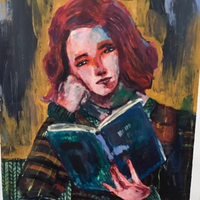
“Reading makes a full man.” – Francis Bacon Student with a greed for amassing enormous vocabulary, yet can’t speak them out. I am known for my avarice lust for words and poetry, I read whatever my hands grab. I like Yeats, Frost, Plath, Sexton and Dylan Thomas. Maybe Ted Hughes. Oh boy new words and poems, here I come!



















